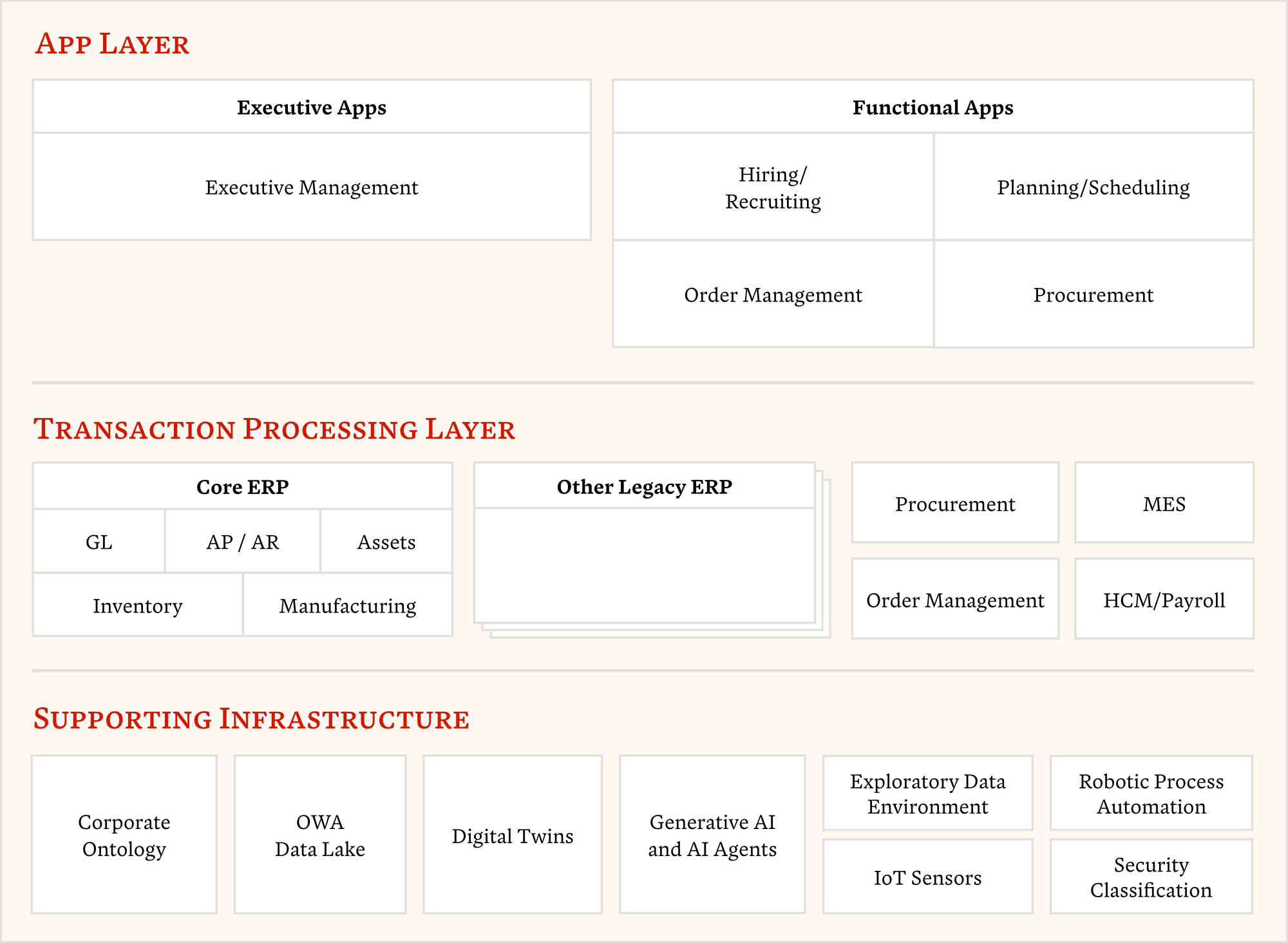The Post-ERP Playbook for PE
PE sponsors continue to drive ERP investments despite an almost universal experience that these initiatives are not transformative, and they would be hard pressed to demonstrate a tangible ROI that meets their targets. Despite appearing in every IT diligence report, the traditional ERP playbook is obsolete.
Unlike traditional ERP, the emerging post-ERP architecture does not have to be built all at once. Our playbook follows a simple sequence that generates tangible ROI for every dollar spent and de-risks the investment by replacing a monolithic ERP investment with a series of transformation projects delivering tangible returns and calibrated to management team capacity.
- Foundational investment in modeling to drive the reporting lens, tightly coupled to strategy and industry/market model
- Transactional maturity roadmap to optimize systems of record and unlock AI projects
- Targeted transformation initiatives aimed at EBITDA/capacity (target ROI) that simultaneously improve overall architecture (force-multiplier)
Plektron Post-ERP Playbook for PE
Phase I: Modeling and transactional maturity roadmapFirst 100 days and whenever the business model changes materially (large M&A, market entry/exit, sometimes product innovation) |
|
|---|---|
|
Short-term ROI
Speed/cost of reporting precision and contribution to strategy formulation Unlock AI/automation projects with short-term EBITDA impact Rationalize systems of record for potential cost savings |
Long-term Impact
Foundation for semantic integration and guardrails for all future system implementation Simplicity and cost-avoidance; elimination of management distractions |
Phase II: Transformation Roadmap and ExecutionIn line with overall value-creation strategy, calibrated to management team capacity for change |
|
|
Short-term ROI
Direct EBITDA improvement |
Long-term Impact
Force-multiplier effect as post-ERP architecture matures, making future transformation easier, improving vision and speed of execution |
What is Post-ERP Architecture?
Post-ERP architecture replaces legacy monolithic ERP suites with a loosely-coupled applications focused on the unique process requirements of the business and integrated via well-defined data models.

The promise of traditional ERP
The promise of ERP was that moving all core functionality into a monolithic system would enable the computerization of processes that crossed traditional application boundaries and reduce the cost of integration (e.g. automatic posting of journal entries from manufacturing to inventory and from inventory to the general ledger). But this promise required two major tradeoffs. Companies needed to (1) incur the upfront cost of implementing the entire system regardless of the value-potential, and (2) incur the inherent friction of using generic software. Outside of the largest enterprises, most ERP users now take as a matter of doctrine it is better to change business processes to match standard ERP workflows rather than incur the cost of customization.
What changed?
The advent of ubiquitous APIs and the maturation of data integration and reporting tools has largely eliminated the need for a monolithic architecture. AI, combined with the maturation of standard data models in many industries, has accelerated this trend.
New risks and mitigation strategies
The post-ERP strategy is not without its own tradeoffs and risks. Companies pursuing this strategy can incur the costs of managing many application vendors and may find that data integration and cross-application reporting is more difficult and expensive than expected. Mitigating this risk requires explicitly investing in a data model of the business that sets the guardrails for all application implementation and enables the full range of automation to be applied to integration and reporting.
Schedule a 25-minute pattern recognition call with one of our Partners to discuss how we can help you drive transformative change for your company.
